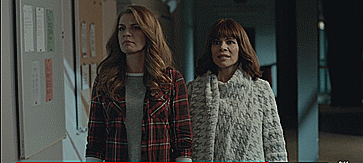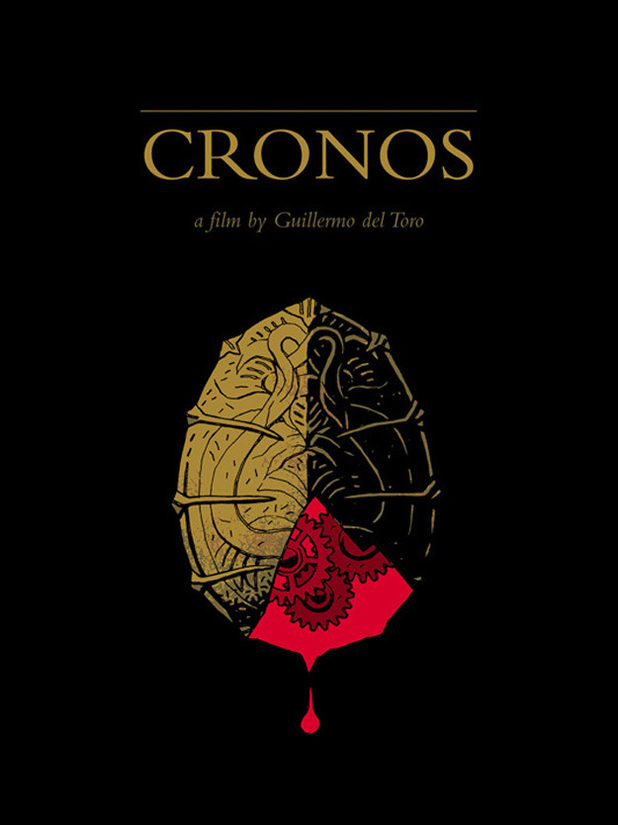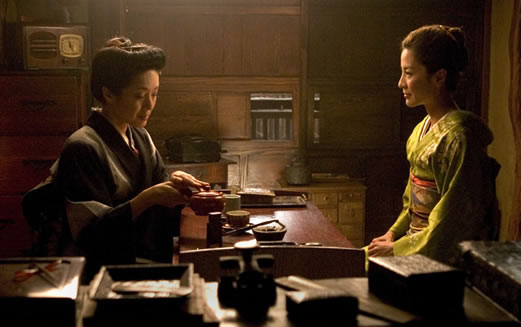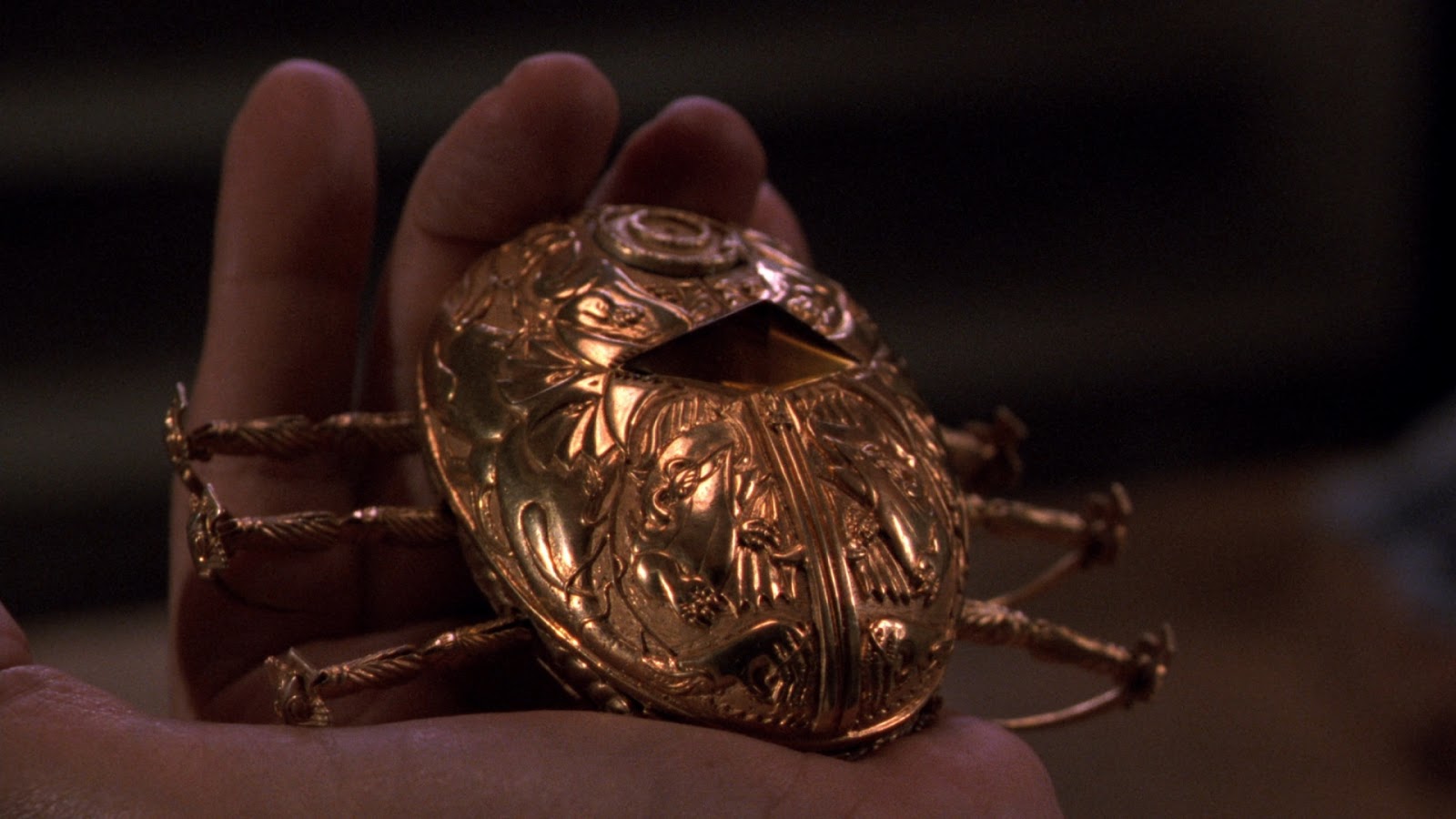- I have a personal preference toward TV series as they intrinsically have more time to plumb the depths (I use idioms now) of their created universes. There are of course many instances where cliffhangers and ambiguity can do a story wonders, but I am usually partial to fuller pictures.
- They tend to have multiple writers and directors, so each episode has the chance to try on a new pair of shoes. Sure, now and then a particular writer goes way too far off the rails, but change is the spice of life. (Oh man. I'm actually kind of ashamed of that last one.)
- Lately, a lot of shows have the same production value as big blockbuster hits.While they have always been able to mix genres more easily than specifically-marketed Hollywood flicks, the increase in budget flow for this art form has allowed the medium to shed almost all remaining constraints.
- The characters. This might tie into the fact that shows have such rich scripts and longer, overarching plots, but it's undeniable that if a writer or an actor wants a character to grow and become fully realized, they must turn to a career in television. Audiences invest extra emotion when following a narrative if its characters share an entire journey with them. It's consciousness substitution, up to a certain point. Anyway, if given enough time any member of the cast can become incredibly compelling. And to compel is the main point of storytelling.
- Title sequences. This is purely a guilty pleasure. I flippin' love opening credits, from their song selection to their font choice. Brit telly tends to have the best, but many Netflix Originals have awesome ones, as well.
 |
| Damn straight I do. |
Because there are so many shows out there, I had to give myself some criteria to pare down my choices. Yay! Another list! Each show...
- could not have coloured mine eyes before I decided to do this post (therefore excluding any I've seen more than three months ago)
- had to come out of Western Europe, including Scandinavia
- none should overlap with another show from the same country (spinoffs excluded)
- could not have English as a first language (sorry UK & Ireland)
- must be subtitled, not dubbed
- needed to be available on Netflix for high-quality streaming (promise that I'm not sponsored, I simply did not want to trudge through dodgy stream sites with crappy load times and zero HD options)
Also note that, while some shows have numerous seasons, I only watched the ones on Netflix. Again I plead quality-snobbery, but it also has to do with the amount of time I had before this December deadline.
Let's do this. [The shows are listed in the order that I watched them, savvy?]
Gran Hotel (Spanish, 2011-2013, 3 seasons)
This show is oft described as the Downton Abbey of Spain (just compare their posters), but really it is far more intriguing. I liked the first few seasons of DA just as much as the next American yearning for a taste of early twentieth century England, but holy crap that stuff got dry fast. Gran Hotel, on the other hand, centers around a murder mystery (or two...or ten). It might be the Masterpiece Mystery in my blood, but I was instantly hooked. Sure there are plenty of plot holes (some of which are pretty major), and it's fairly obvious that some parts of series two and three were written on the fly, but—surprisingly—the intricacies are not too knotted so as to be convoluted. Rather, they are a nice leveler between some of the brilliantly built-up action sequences and other, less engaging scenes laden with exposition.
Because it comes out of Spain, there are touches of la telenovela which give the series a nice cultural flair for the dramatic. Highlight: Everyone is super slap-happy, which is FANTASTIC. While there are definitely instances of machismo, the male characters are certainly not afraid to show their emotions, be it hurt confusion or flat-out despair. The series gets major points for that, in my book. Direction: beautiful. Costuming: exquisite. Comedic aspects: on point. Historical awesomeness: pretty awesome—origins of forensic science FTW! Villainy: a tad hokey at times, but not terrible. Romance between our two protagonists: too precious for this world. This is in my top two of the eight series I set out to review. Soap operas (and shows with similar elements) really sink their claws into ya'.
Because it comes out of Spain, there are touches of la telenovela which give the series a nice cultural flair for the dramatic. Highlight: Everyone is super slap-happy, which is FANTASTIC. While there are definitely instances of machismo, the male characters are certainly not afraid to show their emotions, be it hurt confusion or flat-out despair. The series gets major points for that, in my book. Direction: beautiful. Costuming: exquisite. Comedic aspects: on point. Historical awesomeness: pretty awesome—origins of forensic science FTW! Villainy: a tad hokey at times, but not terrible. Romance between our two protagonists: too precious for this world. This is in my top two of the eight series I set out to review. Soap operas (and shows with similar elements) really sink their claws into ya'.
 |
| Alicia + Julio 4EVA <3 |
Salamander (Belgian, 2012-2013, 1 season)
Ho boy. This one is a doozy. Let's start with the good: it's pretty. They sure didn't spare any expense on that camera! It captures crisp, well-coloured shots. Those flashback scenes are certainly distinguishable, what with the sepia filter. Umm...that's about it, unfortunately. A private bank gets robbed, and it turns out that this über secret organization of elites (called Salamander) had a bunch of incriminating evidence stored in numerous safety deposit boxes at said bank. Lead character Inspector Gerardi comes into the picture, and his life goes to shit when he tries to interfere. It simply isn't compelling, especially on a scene-by-scene basis. Every single female is sidelined (sometimes literally) so that Gerardi can play the hardened badass and go head-to-head with the baddies. 'Now it's personal' is a tired concept, to say the least.
As if that were not boring enough, absolutely nothing is left up to interpretation as some of the characters actually sit down and spell things out for the viewer on multiple occasions, playing the unnecessary part of episode recapper. Even the aforementioned flashbacks are both uninteresting and too many. Also, why would anyone store compromising information in a safety deposit box in the first place? Destroy that shit ASAP, foo'! Let's say for argument's sake that they had a good reason. We then have to ask why every flippin' member of Salamander would use the same bloody bank. -_- It is never a good sign when a show's premise is illogical. When at last it turns out that the person who stole from Salamander in the first place did so to settle a personal vendetta, I was already bored to death. Maybe everyone else was, too, and that's is why Netflix has now removed the show from its website.
As if that were not boring enough, absolutely nothing is left up to interpretation as some of the characters actually sit down and spell things out for the viewer on multiple occasions, playing the unnecessary part of episode recapper. Even the aforementioned flashbacks are both uninteresting and too many. Also, why would anyone store compromising information in a safety deposit box in the first place? Destroy that shit ASAP, foo'! Let's say for argument's sake that they had a good reason. We then have to ask why every flippin' member of Salamander would use the same bloody bank. -_- It is never a good sign when a show's premise is illogical. When at last it turns out that the person who stole from Salamander in the first place did so to settle a personal vendetta, I was already bored to death. Maybe everyone else was, too, and that's is why Netflix has now removed the show from its website.
 |
| A mystery that fails to be mysterious is the worst. Snore... |
Spiral (AKA Engrenages, French, 2005-2014, 5 seasons).
Sweet baby J, please put the fifth season on Netflix! [+ the sixth whenever it comes out] This series and its cast feel so real, something which I attribute to great scripts and excellent acting. As a criminal investigation show I did not expect much from Spiral, but it manages to be infinitely interesting in that it follows not only a Parisian police force but the barristers and judges who then deal with the criminal element after they have been processed. It is gritty at times, refusing to shy away from darker human elements without getting hung up on tropey after-school-special storylines. All recurring characters play a major role in the unfolding of events with each thread leading to suspenseful, oftentimes heartbreaking conclusions. Another bonus is that the series has an explicit French vibe—an important cultural link which Salamander lacks. Not much else to say other than get your marathonin' chair ready, 'cause you won't be able to stop watching once you start.
 |
| Complex relationships help make Spiral feel authentic. Also, Tintin is such a bae. |
Rita (Danish, 2012-2015, 3 seasons)
Following the life of the eponymous school teacher with a rebel attitude, I found this show kinda meh. Subject matter and even the way it is filmed yo-yos between light/fluffy and the extreme/somber, including bits on drug abuse, teen pregnancy and abortion, gay pride v. harassment, et cetera. Oddly, though, the series merely wets its toes with those topics rather than delving beneath the surface and emerging with any serious commentary. That said, it is still wholly enjoyable for what it is even if the viewer can see the plot coming a mile away.
There are a few inconsistencies, too, such as Rita's family—a huge part of both seasons one and two—all but disappearing off the face of the earth in season three with no explanation as to why. This sort of thing would not normally irk me, only Rita's relationship with her kids is integral to her character. Dunno though. Perhaps I am just bitter that my grade school did not have a huge pile of bean bags in the common room, but I like to think that I would hold the American school system rather than a fictional series accountable for such an oversight. At any rate, Rita is crazy popular in Denmark—enough so that it has a Dutch remake called Tessa that began airing last month. Think I'll skip it.
There are a few inconsistencies, too, such as Rita's family—a huge part of both seasons one and two—all but disappearing off the face of the earth in season three with no explanation as to why. This sort of thing would not normally irk me, only Rita's relationship with her kids is integral to her character. Dunno though. Perhaps I am just bitter that my grade school did not have a huge pile of bean bags in the common room, but I like to think that I would hold the American school system rather than a fictional series accountable for such an oversight. At any rate, Rita is crazy popular in Denmark—enough so that it has a Dutch remake called Tessa that began airing last month. Think I'll skip it.
Hjørdis (Danish, 2015, 1 season)
Since Rita is fairly short, I decided to give its spinoff a bash. One word: regrets. D'you remember the Friends spinoff, Joey? The creators took a fan-favourite character and gave him a show of his own...which utterly tanked. While some characters do great in the background, that does not give them an automatic license to come to the forefront and do even better. Hjørdis is the same way. Sweet, awkwardly funny Hjørdis takes on a troupe of quirky loner kids to help them put on a play, facing down a group of bullies and bureaucracy from on high. There are corny slow-motions scenes, eyeroll-worthy montages, and a strange theme of 'special kids' that, for whatever reason, was also present in Rita. 'cause, you know, only unique kids deserve a teacher's full attention. Anyway, this spinoff is as awful as it sounds. (Worse, even.) Luckily, there are only four episodes, each one shorter than those in the original series...praise be to Cthulhu.
Hinterland (Welsh, 2014-2015, 2 seasons)
OK, so I cheated. The spoken language in Hinterland is technically English, but those Welsh accents are so darn difficult to understand at times that you practically require subtitles to get through an entire episode. (I jest! I simply wanted to watch this series. ;P) That aside, this show is pretty good. It has that austere, British murder mystery feel to it that I love to pieces. It actually reminds me a lot of Broadchurch. For starters, each of them are set in a picturesquely pastoral/coastal place that is prone to hiding dark secrets and grisly homicides. They also both star broody, male protagonists who are attempting to atone for something in their murky pasts while their slightly-more-plucky right hand women struggle to keep them on the straight and narrow.
The main difference between the two (apart from a distinct lack of David Tennant) is that Hinterland has about half the number of episodes per season (though their runtime is slightly longer). More importantly, they consist of multiple investigations rather than just one overarching story. This series also works at a much slower pace—something I found reminiscent of Branagh's Wallander. This is especially true when considering the long shots of the surrounding countryside and cliff faces. Foregoing comparison to other shows, though, Hinterland features a building narrative, multilayered characters, and some batshit crazy culprits. Again I beg Netflix to add the most recent season sooner than later.
OK, so I cheated. The spoken language in Hinterland is technically English, but those Welsh accents are so darn difficult to understand at times that you practically require subtitles to get through an entire episode. (I jest! I simply wanted to watch this series. ;P) That aside, this show is pretty good. It has that austere, British murder mystery feel to it that I love to pieces. It actually reminds me a lot of Broadchurch. For starters, each of them are set in a picturesquely pastoral/coastal place that is prone to hiding dark secrets and grisly homicides. They also both star broody, male protagonists who are attempting to atone for something in their murky pasts while their slightly-more-plucky right hand women struggle to keep them on the straight and narrow.
The main difference between the two (apart from a distinct lack of David Tennant) is that Hinterland has about half the number of episodes per season (though their runtime is slightly longer). More importantly, they consist of multiple investigations rather than just one overarching story. This series also works at a much slower pace—something I found reminiscent of Branagh's Wallander. This is especially true when considering the long shots of the surrounding countryside and cliff faces. Foregoing comparison to other shows, though, Hinterland features a building narrative, multilayered characters, and some batshit crazy culprits. Again I beg Netflix to add the most recent season sooner than later.
 |
| Gorgeous direction paired with an eerie atmosphere equates to one winning formula. Picspam captured by me. |
Go figure that one of the only German-made television show I could find on Netflix has to do with WWII. >_> Anyhow, Generation War follows the lives of five young friends from the beginning to the end of the Great War as told from 'the other side'. One is a Jew (again, go figure), another his girlfriend who remains in Germany and struggles on the home front. The third becomes a nurse while the last two are brothers who head to the front line and end up fighting against the Soviet Union. Firstly, let me say that there are soooo many films about this period in history that they all take on a relatively similar cadence. It can be difficult to generate a fresh take: I get it, that's totally fine. Also note that, in the interest of political correctness and an attempt to gain sympathy for those who fought, this show is hardly historically accurate. Eh, that's also fine, since every other piece on the subject—German or American or whatever else—does the same thing. That does not excuse the level of cheese I had to wade through whilst watching this, though.
Yes, the action sequences, direction, and post-production work surpass even that of Band of Brothers. Yes, for the most part the acting is superb, but painting a picture that casts all five leads in the best light possible is, quite frankly, dishonest. For example, the creators somehow thought that it would be a smart move to create tension between Viktor and the Polish resistance by portraying the latter as a band of ultra violent, anti-semitic assholes. What? It's about war, it's going to be depressing, and perhaps I was not in the right frame of mind when I started this miniseries, but I can definitely understand why there has been some controversy around it even when abstaining from the nonsensical view of 'it's German | they're German | they were the bad guys | how dare they | 'murica fuck yeaaaa'. It will always be a tad difficult with semi-nonfictive works to take them for what they are: glossified entertainment. There is nothing inherently wrong with that; I simply find it inauthentic and corny.
 |
| War. War never changes. (Fallout 4 was just released, so I kind of had to.) |
It was mentioned earlier that I really like Kenneth Branagh's version of Wallander based on the lately deceased Henning Mankell's series of novels of the same name. Though I ashamedly have not read any of the books, I still appreciate the severely depressed protagonist and the small, coastal town where he carries out his work as an investigative police officer. While Branagh's show has an all-English cast, it is still convincingly set in the town of Ystad and does not, in fact, feel super British. There are actually two Swedish portrayals of the same character (both of which preceded the BBC drama), so I chose to watch Krister Henriksson's more recent adaptation. Much to my annoyance, Netflix only carries seasons two and three, but because of that very fact there is not a lot of overlap between the mysteries I had already seen, so it worked out well enough.
Both variations have a similar episode length, melodramatic scenes, strong female characters, and—of course—the same obsessive detective. The similarities diverge after that. Henriksson plays a moody Kurt Wallander, one who does not get along too well with his colleagues. Those colleagues, however, get a lot more airtime and play a larger part than those in Branagh's which seems to be focused much more sharply on Kurt himself. Both versions of the man have pretty crappy personal lives, but that emotion seems rawer when Branagh plays the part. The direction is stark, though still scenic and beautiful, and it gives a sense of human psychology that is oftentimes not present in Henriksson's interpretation...although it is worth mentioning that his gives the audience a better sense of resolution at the end of each episode (something that helps the viewer to cope with all the dark shit that went on throughout and lends enough strength to watch the following installment). It is Nordic Noir, so ya gotta expect things to be bleak—it comes with the territory. After watching the available episodes, I still prefer Branagh's but am very glad that I watched Henriksson's for his stimulating take on such a great character and, obviously, the 'new' mysteries.
 |
| The actors even look alike. |
Because of my 'no overlap' rule, I did not get a chance to watch other foreign shows like Borgen, The Bridge, Romanzo Criminale, The Killing, Braquo, The Eagle, et cetera. I reeeeeally wanted to, though! Who knows—I may write future posts on those if I ever manage to reach them on my intimidatingly long 'to-be-watched' list. Touching on series from other parts of the world would be cool, too. Until then, I hope you enjoyed this rather lengthy post. Let me know in the comments below if you have watched or plan on watching any of these series, as I would love to hear your take on them. Cheers!
























































